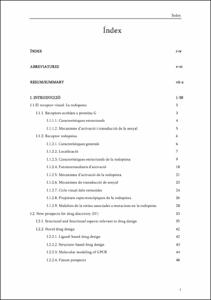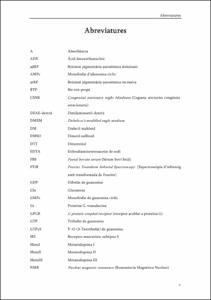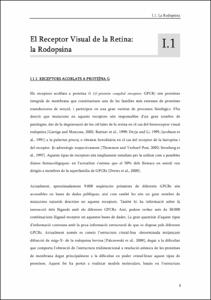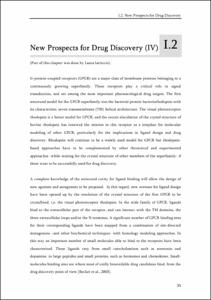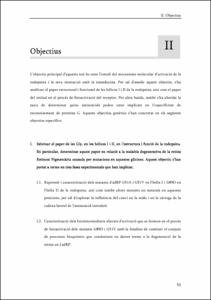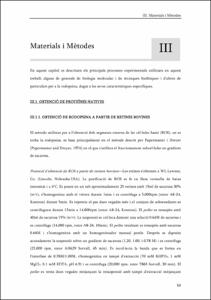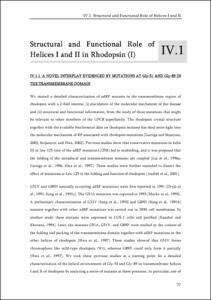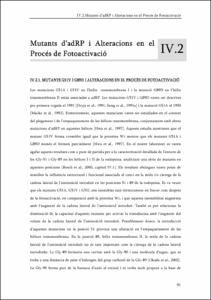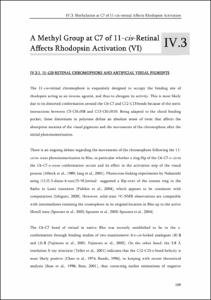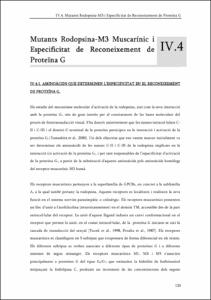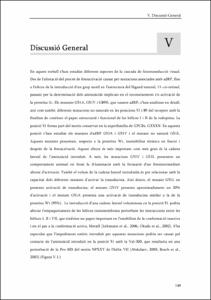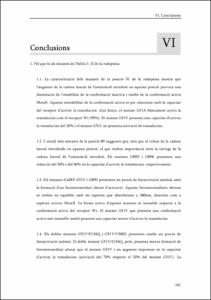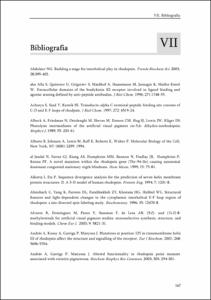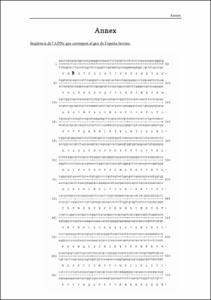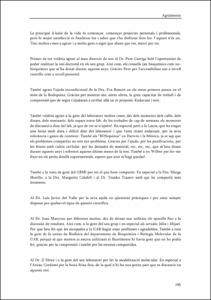Mostra el registre d'ítem simple
Mecanisme d'activació de la Rodopsina i reconeixement molecular de la proteïna Gt
| dc.contributor | Garriga Solé, Pere |
| dc.contributor.author | Bosch Presegué, Laia |
| dc.contributor.other | Universitat Politècnica de Catalunya. Departament d'Enginyeria Química |
| dc.date.accessioned | 2011-04-12T15:15:27Z |
| dc.date.available | 2007-07-27 |
| dc.date.issued | 2007-05-16 |
| dc.date.submitted | 2007-06-28 |
| dc.identifier.citation | Bosch Presegué, L. Mecanisme d'activació de la Rodopsina i reconeixement molecular de la proteïna Gt. Tesi doctoral, UPC, Departament d'Enginyeria Química, 2007. ISBN 9788469079164. DOI 10.5821/dissertation-2117-93767. |
| dc.identifier.isbn | 9788469079164 |
| dc.identifier.other | http://www.tdx.cat/TDX-0628107-092917 |
| dc.identifier.uri | http://hdl.handle.net/2117/93767 |
| dc.description.abstract | La rodopsina (Rho) és el receptor visual responsable de la visió a baixa intensitat lumínica. Aquest receptor, que es troba en les cèl·lules bastó de la retina, està constituït per 7 hèlices transmembrana i és el prototip dels receptors acoblats a proteïna G (GPCR), degut a que és l'únic del qual s'ha resolt l'estructura per difracció de raig X. Els GPCR tenen interès farmacològic ja que es troben involucrats en un gran nombre de processos fisiològics i patofisiològics. L'estudi estructural i funcional de la Rho ens ha de permetre determinar motius estructurals comuns en els GPCR, així com, elucidar el possible mecanisme molecular comú d'activació. A més, l'estudi de mutacions de Rho associades a malalties com la retinosi pigmentària (RP) ens ha d'apropar a les bases moleculars de la patologia. L'objectiu principal d'aquesta tesi ha estat l'estudi del mecanisme molecular d'activació de la Rho i la seva interacció amb la transducina. Per això, s'ha analitzat el paper estructural i funcional de les hèlices I i II de la Rho, així com el paper del retinal en el procés de fotoactivació del receptor. Per altra banda, també s'ha abordat la tasca de determinar quins aminoàcids poden estar implicats en l'especificitat de reconeixement de proteïna G. <br/>S'han estudiat les mutacions d'adRP G51A, G51V i G89D, així com mutacions no naturals en aquestes posicions, per tal de determinar el paper de les hèlices I i II en l'estructura i la funció de la Rho. La caracterització dels mutants de la posició 51 mostra que l'augment de la cadena lateral de l'aminoàcid introduït provoca una disminució de l'estabilitat de la conformació inactiva i també de la conformació activa (MetaII), que es pot relacionar amb la capacitat del receptor d'activar la transducina. L'estudi dels mutants de la posició 89 suggereix que en aquesta posició el que tindria importància seria la càrrega de la cadena lateral de l'aminoàcid. A més, els mutants G51V i G89D presenten un procés de fotoactivació anòmal, amb la formació d'un fotointermediari alterat que es troba en equilibri amb la MetaII. El mutants G51V i G89D presentarien un desplaçament en l'equilibri entre les conformacions MetaIa, MetaIb i MetaII cap al fotointermediari MetaIb, i aquest fet conjuntament amb la inestabilitat de la MetaII podrien ser els defectes moleculars que causarien RP. Per altra banda, la proteïna Wt va ser regenerada amb 11-cis-7-metilretinal (7 metil-Rho), amb la finalitat de determinar el paper del retinal en la fotoactivació del receptor. La proteïna 7-metil-Rho forma cromòfor de forma similar a Rho però presenta un procés de fotoactivació anòmal, amb la formació d'un fotointermediari alterat que es troba en equilibri amb la MetaII. La introducció d'un grup metil en el C7 del retinal provocaria canvis estructurals que afectarien la Met-207 i que farien que el receptor quedés atrapat en el fotointermediari MetaIa. L'equilibri existent entre les conformacions MetaIa, MetaIb i MetaII estaria controlat per una xarxa d'interaccions complexa entre les hèlices I, II i VII de la Rho i també per les interaccions entre la opsina i el retinal. <br/>També es van construir i expressar els mutants rodopsina-M3 de les nanses C-II i C-III. Aquests mutants presenten formació de cromòfor i un comportament en front la il·luminació similar al de la rodopsina Wt. Els mutants simples de la nansa C-II presenten la mateixa capacitat d'activar la transducina que el receptor Wt a excepció del mutant V138S que presenta una activació de transducina reduïda a l'igual que els mutants de la nansa C-III i que els mutants conjugats d'aquestes nanses. Cap dels mutants d'estudi presenta, però, un augment en l'activació de proteïna Giαq respecte al Wt. Els conjunt de resultats obtinguts suggereixen que els aminoàcids Val-138, Val-227, Val250, Val254 i Ile-255 de la Rho participarien en el reconeixement i/o activació de la transducina, i indicarien que les interaccions hidrofòbiques serien claus per la interacció Rho-transducina. |
| dc.description.abstract | Rhodopsin (Rho) is the visual photoreceptor responsible for dim light vision. This receptor, that is located in the rod cell of the retina, has seven transmembrane helices and is a prototypical member of the G protein coupled receptors (GPCR) superfamily, being the only member of this superfamily whose structure has been resolved by X-ray chrystallography. The study of GPCR is of outstanding pharmacological interest because they are involved in a wide variety of physiological and pathophysiological processes. Structural and functional studies of Rho should provide clues about common structural motifs in GPCR and allow us to elucidate the molecular bases of a proposed common activation mechanism. Besides, the study of Rho mutants associated with retinal diseases, such as retinitis pigmentosa (RP) provides information about the molecular mechanism of this pathology. The main goal of this work is unraveling the structural details underlying the molecular mechanism of Rho activation and its interaction with transducin. To this aim we have analyzed the structural and functional role of helices I and II of Rho, as well as the role of retinal in the photoactivation process of the receptor. We have also tried to determine the amino acids involved in the specificity of G protein recognition. <br/>We have studied the adRP mutants G51A, G51V and G89D, as well as non-natural mutations at these positions, in order to determine the role of helices I and II in Rho structure and conformational changes upon light activation. The detailed characterization of mutations at 51 position shows that this position is very sensitive to the size of the introduced side chain. The increase volume of side chain of the introduced amino acid can be correlated with dark and active conformation (MetaII) stability and eventually with the capacity to activate the G-protein transducin. The study of mutations at 89 position suggests that the charge effect is more important for mutations in this position. Additionally, G51V and G89D mutants showed an abnormal photobleaching, with formation of an altered photointermediate which is in equilibrium to MetaII. We suggest that G51V and G89D mutants alter the proposed equilibrium between MetaIa, MetaIb and MetaII to favour the MetaIb photointermediate, and this fact together with the observed MetaII instability could be the molecular defects that caused RP. <br/>Wt Rho was regenerated with 11-cis-7 methylretinal (7-methyl-Rho), to gain insights into the opsin-retinal coupling process and to determine the role of retinal in the photoactivation process. 7-methyl-Rho showed chromophore formation similar to Rho but an abnormal photobleaching behaviour with formation of an altered photointermediate which is in equilibrium to MetaII photointermediate. The methyl group at C7 of retinal would introduce a structural change at the vicinity of Met-207 that would result in receptor trapping at the MetaIa conformation during the photoactivation process. MetaIa, MetaIb and MetaII equilibrium would be controlled by a network of complex interactions between helices I, II and VII of rhodopsin and also by opsin and retinal interactions. <br/>In another approach, we constructed and expressed Rho-m3 mutants at intracellular loops C-II and C-III. These mutants showed chromophore formation and photobleaching behaviour similar to Wt Rho. Single point mutants at the C-II loop showed transducin activation like Wt Rho with the exception of V138S mutation that caused a reduction in transducin activation like mutants at C-III loop and conjugated mutants at C-II and C-III loops. None of these mutants showed Giαq activation with regard to Wt protein. The results suggest that Val-138, Val-227, Val-250, Val-254 and Ile-255 amino acids of Rho participate in transducin binding and/or activation, and that hydrophobic interactions involving these residues would be an important factor mediating Rho-transducin interaction. |
| dc.language.iso | cat |
| dc.publisher | Universitat Politècnica de Catalunya |
| dc.rights | ADVERTIMENT. L'accés als continguts d'aquesta tesi doctoral i la seva utilització ha de respectar els drets de la persona autora. Pot ser utilitzada per a consulta o estudi personal, així com en activitats o materials d'investigació i docència en els termes establerts a l'art. 32 del Text Refós de la Llei de Propietat Intel·lectual (RDL 1/1996). Per altres utilitzacions es requereix l'autorització prèvia i expressa de la persona autora. En qualsevol cas, en la utilització dels seus continguts caldrà indicar de forma clara el nom i cognoms de la persona autora i el títol de la tesi doctoral. No s'autoritza la seva reproducció o altres formes d'explotació efectuades amb finalitats de lucre ni la seva comunicació pública des d'un lloc aliè al servei TDX. Tampoc s'autoritza la presentació del seu contingut en una finestra o marc aliè a TDX (framing). Aquesta reserva de drets afecta tant als continguts de la tesi com als seus resums i índexs. |
| dc.source | TDX (Tesis Doctorals en Xarxa) |
| dc.subject | Àrees temàtiques de la UPC::Enginyeria química |
| dc.subject.other | biologia molecular |
| dc.subject.other | bioquímica |
| dc.subject.other | GPCR |
| dc.subject.other | rodospina |
| dc.subject.other | transducina |
| dc.subject.other | receptors de membrana |
| dc.title | Mecanisme d'activació de la Rodopsina i reconeixement molecular de la proteïna Gt |
| dc.type | Doctoral thesis |
| dc.subject.lemac | Rodopsina |
| dc.subject.lemac | Proteïnes G |
| dc.identifier.doi | 10.5821/dissertation-2117-93767 |
| dc.identifier.dl | B.44298-2007 |
| dc.rights.access | Open Access |
| dc.description.version | Postprint (published version) |
| dc.identifier.tdx | http://hdl.handle.net/10803/6456 |
Fitxers d'aquest items
Aquest ítem apareix a les col·leccions següents
-
Departament d'Enginyeria Química [222]
-
Totes les tesis [5.461]



